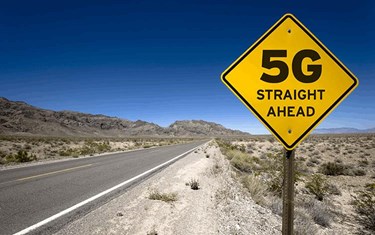4 Ways 5G Tech Could Impact Medical Facilities
By Kayla Matthews, Productivity Bytes

The 5G network is coming, and even though people don't have widespread access to it yet, they typically have a strong sense that it could forever change how they use the internet and connected technologies.At the industry level, organizations are also anticipating how this technology could improve their operations. Here are four ways it may impact healthcare.
1. Improvements For First Responders And Emergency Room Workers
Ambulance crews provide briefs to emergency room workers when they're en route to those facilities. Then, the emergency room team understands what to prepare for before injured or ill patients arrive. The information given to emergency rooms could improve thanks to 5G.
In Spain, the Catalonian government plans to use 5G-connected ambulances. Representatives say it'll be possible to reserve communication channels or network "slices" solely for emergency crews. The communications also can extend to vehicle-to-vehicle or vehicle-to-infrastructure outside of allowing ambulance crews to speak to hospital personnel. As such, ambulance drivers could enjoy less congested routes to the hospital.
Plus, the ambulances will have real-time, high-definition feeds, allowing hospital workers to see the patients in transit instead of just receiving verbal descriptions. Then, they can better assess whether to prepare operating rooms for urgent surgeries, have extra hands on board to deal with a patient having a psychotic episode and other specifics.
2. Allowing Specialists To Help With Surgeries Remotely
If a patient requires surgical intervention from a surgeon who's not on-site, the people at the hospital have to work hard to keep the individual stable until that specialist arrives. Sometimes even their best efforts fail. However, 5G seems like a promising option for performing surgeries from afar.
According to reports, the first surgery performed using 5G happened in China in January 2019. It allowed a surgeon to remotely remove a liver from a lab animal using robotic arms. The equipment only had a 0.1 second lag time between the surgeon giving a command and the equipment responding in the operating room.
Human operations followed not long after that. In mid-March, a patient with Parkinson's disease received a brain implant remotely with help from the 5G network. That feat also occurred in China. The surgeon manipulating the operating tools was more than 1,850 miles away and the surgery lasted several hours, helping to assert the 5G network's reliability.
Moreover, one instance indicated that the people involved in these operations are confident enough in them that they'll do the procedures in front of a live audience. In late February 2019, a surgeon stood on stage at the Mobile World Congress conference and directed a surgical team despite being three miles from the operating room.
In that case, the surgeon assisted with removing a cancerous tumor from a person's colon. He could highlight an area of the patient's body from afar, making markings visible to the on-site team that guided them as they proceeded.
3. Promoting More Personalization For Patients
Analysts also believe the 5G network will facilitate improvements in personalized care. For starters, it could allow doctors to continually collect data on patients between office visits, allowing them to proactively respond to changes. Or, the patients could engage in high-quality video chats that would enable them to immediately inform their doctors about things like medication side effects instead of waiting for their next in-person appointments.
The details included in a Qualcomm report also suggest that the rapid data transfer speeds will give physicians more opportunities to analyze multiple streams of information, equipping them to start more customized treatments for the patients who need them.
5G might also aid health insurance companies in providing more appropriate prices for premiums. For example, if customers use health wearables that transmit data over the 5G network, they could help insurers keep track of things like how often a person exercises. Then, an individual could make conscious decisions to live healthier and see the results via a lower price for coverage.
4. 5G Could Make Cyber Attacks Worse
Health care is already at a higher-than-average risk for cyber-attacks compared to other industries. FortiGuard Labs performed an investigation and found that healthcare organizations experience more than twice the number of cybersecurity attacks as those in other verticals.
Some of the incidents are so severe that hospitals have to shut down their computers and resort to using pens and paper or conclude that they cannot accept more patients until they resolve the problems.
The findings from 5G researchers also indicate that the medical sector should not assume the threat level will go down once 5G rolls out. Rather, it'll likely get worse. Experts point out that the amount of data transferred will go up, and those transfers will happen at faster speeds. That means that if hackers infiltrate, they could do more damage in a smaller window of time.
Also, the 5G network will connect more people and devices than previous networks have. According to a McKinsey & Company report, 5G could allow up to one million connections per square kilometer. That means attacks affecting relatively small areas could still be catastrophic for healthcare facilities.
Promising, But Not A Cure-All
This list shows that 5G has the potential to drastically improve healthcare for patients and providers. However, health facilities must be exceptionally vigilant in safeguarding against cyber-attacks.
The capabilities of 5G connectivity will enhance what's possible in the medical world, but they'll also entice cybercriminals.
About The Author
Kayla Matthews is a MedTech writer whose work has appeared on HIT Consultant, Medical Economics and HITECH Answers, among other industry publications. To read more from Kayla, please connect with her on LinkedIn, or visit her personal tech blog at https://productivitybytes.com.
